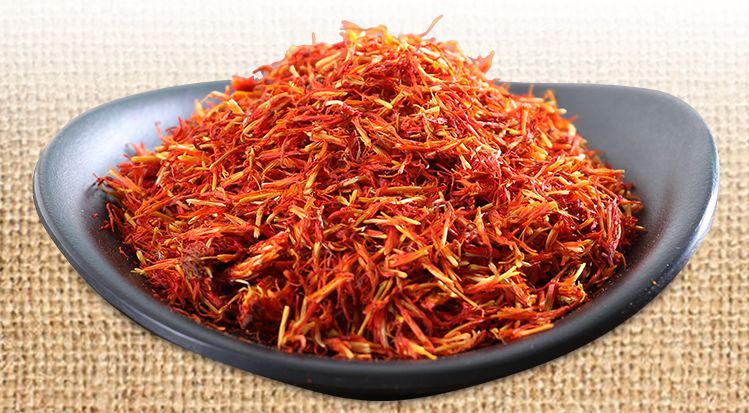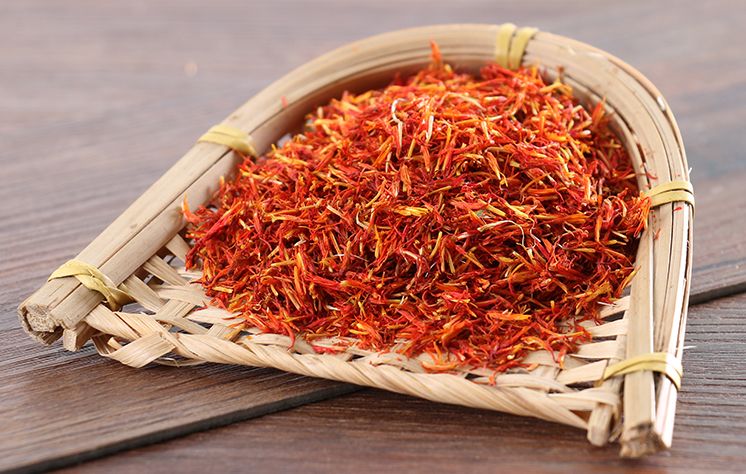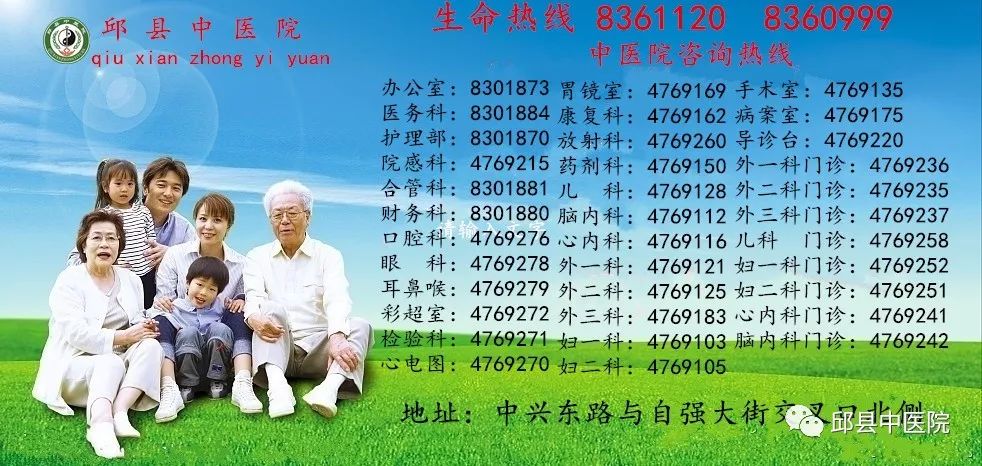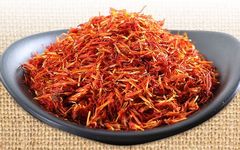
 A Brief Story of Safflower
A Brief Story of Safflower
According to the “Night Talks by the Boat Window” by Gu Wenjian from the Song Dynasty, there was a woman surnamed Xu in Xinchang who fell critically ill after childbirth. Her family invited the famous doctor Lu Riyang to treat her. When he arrived at the patient’s home, her breath was almost gone, with only a slight warmth in her chest. After examining her, Lu Riyang thought for a moment and said, “This is a case of blood stagnation; quickly buy several tens of pounds of safflower to be effective.” He boiled the safflower in a large pot, and after it boiled, poured it into three wooden barrels. He placed a window frame over the barrels and had the patient lie on it to inhale the medicinal vapors. After the decoction cooled, he reheated it and poured it back into the barrels, repeating this process. After a while, the patient’s stiff fingers began to move, and after half a day, she gradually regained consciousness and escaped danger, for which her family was immensely grateful.

 Safflower Overview
Safflower Overview
【Source】Safflower is the dried flower of the plant Carthamus tinctorius, which belongs to the Asteraceae family.
【Taste and Properties】Spicy, warm. It enters the Heart and Liver meridians.
【Characteristics】This herb is spicy, dispersing, and warm, benefiting the Heart and Liver meridians. It can invigorate blood circulation and unblock meridians, dispel stasis, and alleviate pain, particularly effective for conditions related to blood stasis, especially in cases of cold.
【Functions】Invigorates blood circulation and unblocks meridians, dispels stasis, and alleviates pain.
【Indications】
1. Blood stagnation leading to amenorrhea, dysmenorrhea, and retained lochia after childbirth.
2. Chest obstruction and heart pain, masses and accumulations, trauma and swelling.
3. Dark rashes (when combined with heat-clearing and blood-cooling herbs).
【Dosage and Administration】3–10g.
【Precautions】Use with caution in pregnant women. This herb is spicy and warm, with strong blood-invigorating properties, thus contraindicated for pregnant women and those with excessive menstrual bleeding.
【Origin】Mainly produced in Henan, Hebei, Zhejiang, Sichuan, and Xinjiang provinces.
【Harvesting and Processing】Harvest the flower heads when they turn from yellow to red between May and July, preferably on sunny mornings when the dew has dried, and dry them in the shade or under sunlight.

【Identification of Authenticity】
Authentic Safflower: The flower heads should be bright red and vivid, without stems or thorns, soft and smooth to the touch.
Safflower consists of tubular flowers without ovaries, approximately 1–2cm long. The surface is reddish-yellow or red. The flower tube is slender and five-lobed at the tip, with lobes that are narrow and 5–8mm long; there are five stamens, and the anthers are tubular and yellowish-white; the style is long and cylindrical, slightly bifurcated at the tip, and soft in texture. It has a faint fragrance and a slightly bitter taste.
Local Varieties: There are thornless varieties of safflower with deep red flowers, cultivated in North China and Xinjiang for medicinal use.
Quality Identification: Some unscrupulous merchants dye other Asteraceae plants to pass them off as safflower. Here are simple and quick methods for identification:
1.Visual Inspection: Authentic safflower has clear and straight flower tubes and lobes, with a distinct color contrast between the red (or yellow) flower tube and the yellowish-white anthers. Dyed safflower appears fluffy, with curled lobes and some clumped together, showing a reddish-yellow color, and the yellowish-white color of the anthers is not prominent.
2.Smell Test: Authentic safflower has a faint fragrance and a slightly bitter taste; dyed safflower has a strong chemical smell.
3.Water Test: Place safflower in a cup and add warm water. Authentic safflower will dissolve to a clear golden color, with the red of the flower lobes and the yellow of the anthers remaining unchanged. Dyed safflower will produce a cloudy brown solution, with the colors fading.
【Modern Pharmacological Research】
Safflower contains safflower yellow, safflower quinone, and new safflower yellow. The components vary with the maturity of the safflower; pale yellow flowers contain new safflower yellow and trace safflower yellow; yellow flowers contain safflower yellow; and orange-red flowers contain safflower yellow or safflower quinone. It also contains quercetin, safflower yellow pigment, palmitic acid, myristic acid, and lauric acid. Modern studies show that safflower can stimulate the uterus, dilate blood vessels, improve microcirculation, and has anticoagulant, anti-thrombotic, and lipid-lowering effects.

【Clinical Applications】
1. For masses and lumps, abscesses and swellings, trauma pain, rheumatic pain, irregular menstruation, abdominal pain due to amenorrhea, and postpartum pain. Safflower is spicy and warm, primarily used to invigorate blood and dispel stasis, making it a key herb for treating blood stasis, especially commonly used by women for regulating menstruation. Safflower is often combined with peach kernel for blood invigorating effects, and for dispelling stasis, it can be combined with herbs like Rhizoma Sparganii, Curcuma, Rhubarb, and Eupolyphaga.
2. For dark rashes. Safflower can be used for measles that have receded or for heat stagnation and blood stasis, where the rashes are not bright red. It can be combined with Angelica, Lithospermum, and Isatis to invigorate blood, cool blood, and clear heat.
3. For coronary heart disease and angina, and thromboangiitis obliterans. For coronary heart disease and angina, it is often used with Salvia miltiorrhiza, Ligusticum chuanxiong, and red peony; for thromboangiitis obliterans, it can be used with Angelica, peach kernel, red peony, and frankincense.
 Safflower Dietary Recipes
Safflower Dietary Recipes
1.Safflower Glutinous Rice Porridge: 5g of safflower, 10g of Angelica, 15g of Salvia miltiorrhiza, and an appropriate amount of glutinous rice. Boil safflower, Angelica, and Salvia in water, filter to retain the liquid, wash the glutinous rice, and cook it with the liquid and an appropriate amount of water until porridge is ready. This recipe nourishes blood, invigorates blood circulation, and regulates menstruation, suitable for those with irregular menstruation.
2.Safflower Black Bean Sweet Soup: 4g of safflower, 30g of black beans, and an appropriate amount of brown sugar. Soak safflower for 10 minutes, wash black beans, and place both in a clay pot with an appropriate amount of water. Boil on high heat for 5 minutes, then simmer until the black beans are soft. Remove the black beans and safflower, add sugar to taste. This recipe invigorates blood circulation and alleviates pain, suitable for severe dysmenorrhea.


END

This public account is dedicated to promoting public welfare.
No commercial use is allowed.
If there are any copyright or regulatory violations regarding text, images, or video designs, please inform us promptly for removal.
Editor: Publicity Department
Reviewer: Wang Xin
Qiu County Traditional Chinese Medicine Hospital
National Level II Class A TCM Hospital
National Advanced Unit in TCM Work
For residents of Qiu County hospitalized in the hospital.
Residents of urban and rural areas.

Residents of urban and rural areas have a reduced threshold of 200 yuan.
Reimbursement policy for residents of urban and rural areas.
|
Hospital Level |
Threshold |
Threshold Reduction200 yuan |
|
Qiu County Traditional Chinese Medicine Hospital |
300 yuan |
|
|
Other Level II Class A Hospitals |
500 yuan |


 Long press the QR code
Long press the QR code Follow the public account
Follow the public account
Qiu County Traditional Chinese Medicine Hospital
Life Hotline
8360999
8361120
Let’s work hard together, move forward together!
If you like it, share it with your friends!
Your every share is our greatest motivation for progress!

